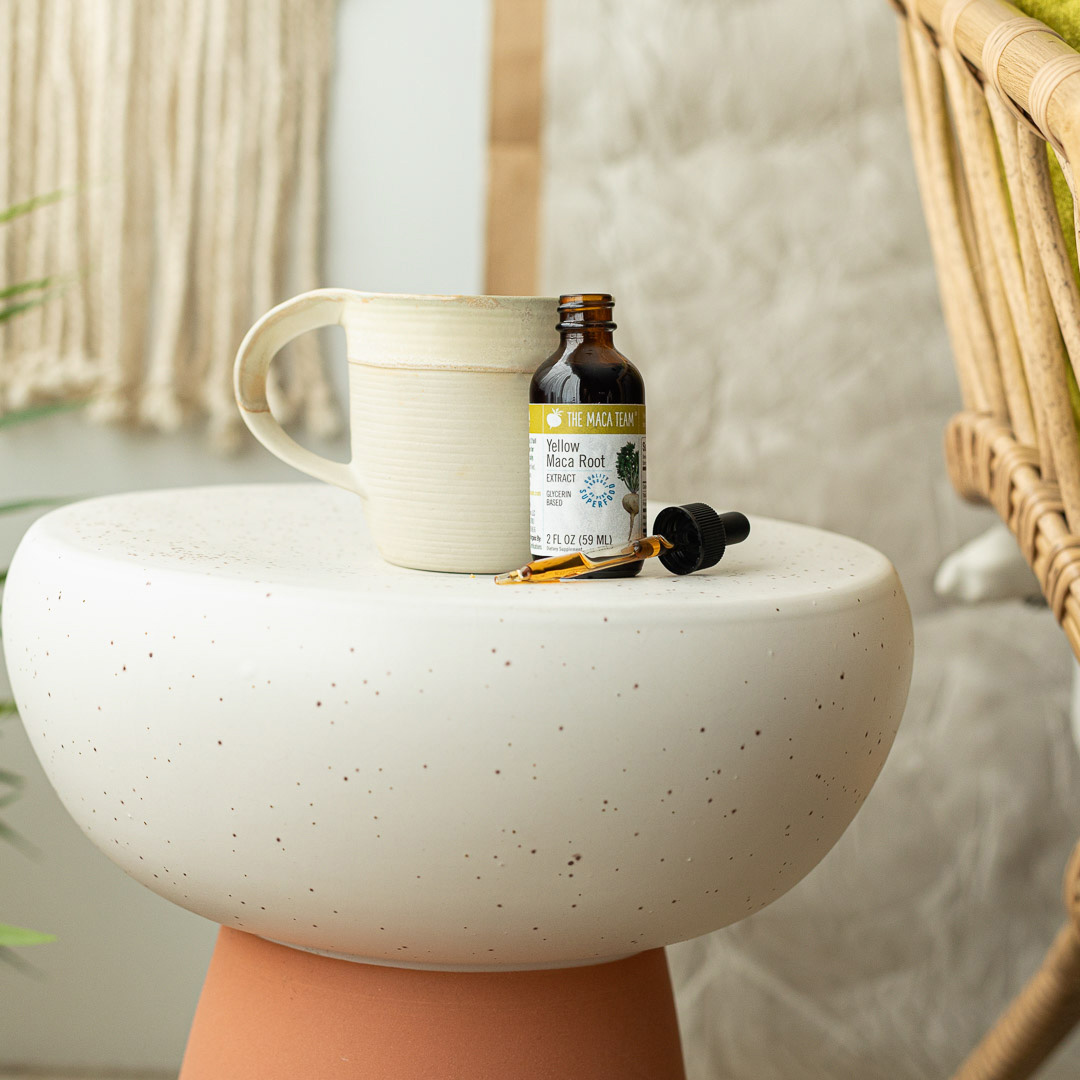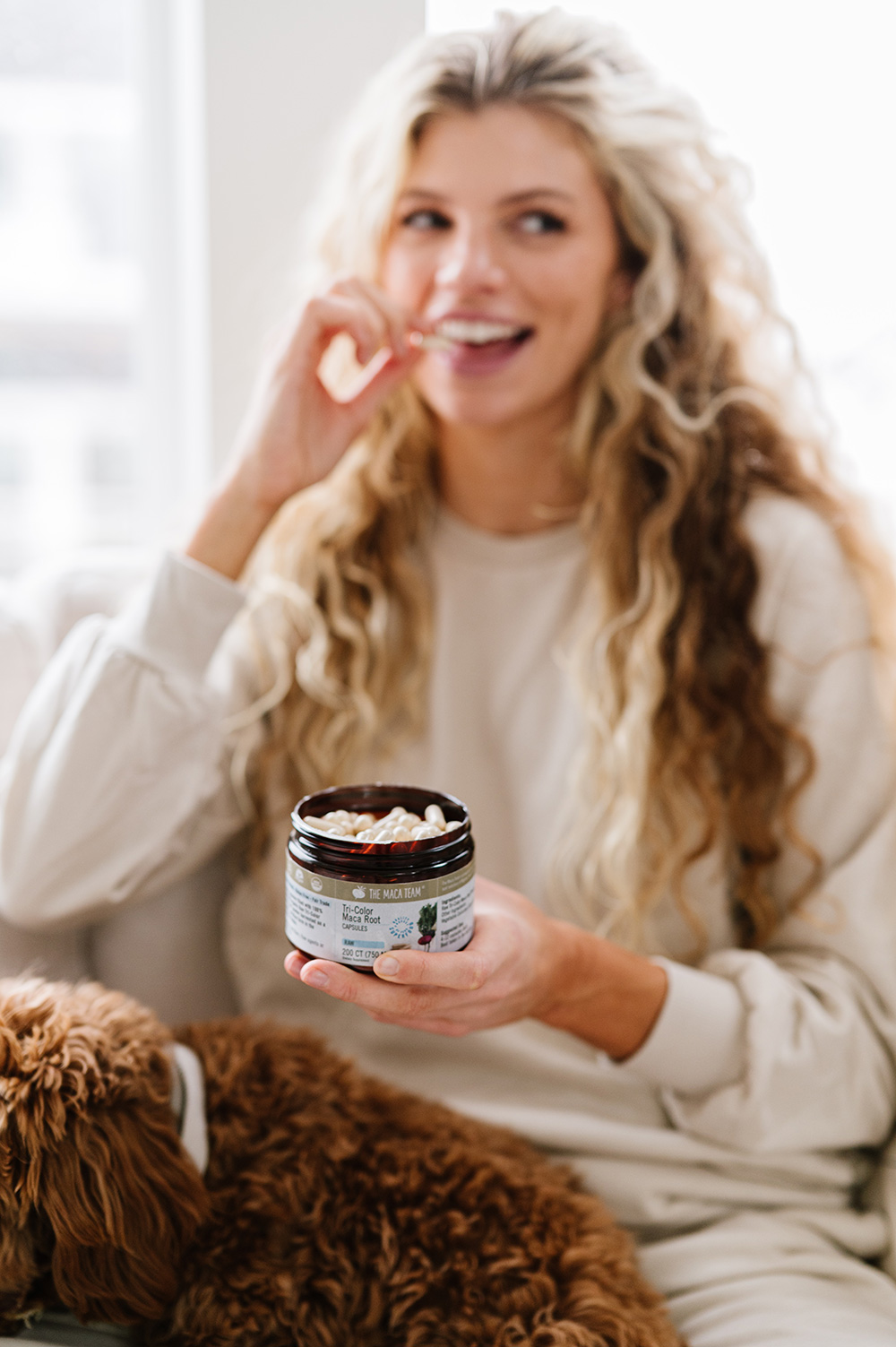Maca Supplements
Is Maca a Good Supplement?
With more an more health supplements available than ever, it can be confusing to know which ones are really can make an impact and are worth the money they cost. In this article we have a detailed look at maca root as a supplement. We'll cover the good and the bad and separate the facts from fiction.
Introduction 
In the ever expanding world of health supplements, a simple root vegetable commonly called “maca” has gained significant attention. The term “maca supplement” has become something of a buzzword in the wellness community, sparking curiosity and intrigue among people who have heard about the potential benefits. Maca has also sparked a rash of hyperbolic claims about its effects by individuals and companies looking to maximize their sales and profit. But what is the truth about maca supplements? In this comprehensive guide, we provide a neutral in-depth exploration of maca supplements while separating fact from fiction regarding this popular natural product.
An Overview Of Maca Root
Maca root is a cruciferous vegetable native to the Andes that has been used for food and medicine for 1000s of years. It is known by various names. Scientifically it is called Lepidium meyenii, Lepidium peruvianum and Lepidium pervianum Chacon. Traditionally it is called “maga,” “maino,” “ayak chichira” and “ayak willku” among others. Colloquially, it is known as “peruvian ginseng” or “ginseng andin,” even though it is not related to Chinese herb. More commonly it is known simply as maca.
Maca roots grow on the high mountain plateaus of the Peruvian and Bolivian Andes. Most evidence suggests that the exact origin of maca is in the Junin region of Peru, dating back at least 3000 years. People indigenous to the region have cultivated and consumed it since then both as a staple food and as a natural form of medicine. Traditionally, maca has been revered for its energy-boosting properties and its ability to help people and animals thrive in challenging and often inhospitable high-altitude environments.
Today maca is considered a true gift from the Andes. This humble vegetable is widely recognized for its adaptogenic, nutritional and hormone balancing properties. Maca roots are still cultivated in the high mountains of Peru and after harvest are dried and ground into chips and fine powders that are used to create maca supplements. These maca products are now accessible to a global audience.
Fiction: maca is easy to grow
Fact: maca only grows well in the high Andes
Context: Attempts have been made to grow maca roots in Europe, the U.S. and China. All have been unsuccessful in producing any quality results. It seems that maca root really only thrives in the harsh climactic conditions and rocky dry soils of the high mountain regions of Peru and Bolivia.
What Types Of Maca Are There?
Maca roots are typically about the size of a large common radish and grow in a range of colors. Like radishes, the color of maca roots is found predominantly in the skin. Below the skin all maca roots are a light tan color.
Light beige to deep golden roots are grouped together and categorized as “yellow maca.” Yellow maca roots make up approximately 60% of the annual harvest, making them the most common and most researched of all maca types.
Light pink to deep purple maca roots are categorized as “red maca” and make up about 25% of the annual harvest. Red maca has been shown to have more phytonutrient content and to be higher in antioxidants than the other major colors.
Light gray to dark gray roots are put together and categorized as “black maca.” These roots make up just about 15% of the annual harvest, making them the rarest of the three colors. Black maca has been associated with increased energy, muscle building and focus.
All maca supplements are made starting from maca roots of one of these three color ranges or from a mixture of roots from each color range.
Fiction: there are only 3 colors of maca
Fact: there are many more variations among maca colors
Context: Although maca roots are divided into three major color groups, maca farmers in Peru have identified over 30 ecotypes of maca. For example, yellow with white spots, medium gray with yellow stripes, pink with gray spots, etc.
Is Maca A Food Or A Supplement?
The answer to this question is “yes.” Maca is both a food and a supplement.
When maca is presented as a whole dried root, as maca chips (small chunks of roots) or as maca powder it is considered as a food. In fact, when maca powder or chips enter the U.S. the FDA categorizes them as a “flour from a root or tuber.” The primary use of maca powder is as a food rather than as a supplement to a diet.
On the other hand, when maca powder is made into capsules, pressed into tablets or used to make liquid extracts, it is considered a supplement. Supplements are most commonly derived from herbs or other botanicals and can include things like vitamins and minerals. They are meant to be consumed as a supplement to your regular diet, but not as a food in and of themselves.
Fiction: maca root is a herb
Fact: maca root is considered a food – it’s only a supplement in capsule, pill or extract form
Context: Although maca root products are often found in the supplement aisle of natural food stores, the powder and chip form of maca belong in the food category. Also, maca is sometimes confused as being an herb. It is not. Although it has similar adaptogenic properties to the ginseng herb, maca root is most commonly used as a food.
What Are Maca Supplements?
As we’ve seen above, maca powder and maca chips are considered to fall in the category of food and their labeling reflects that with a “nutritional facts” label on each package. Maca powder may also be used as a food in other blends such as “maca coffee” or “maca blue.”
Maca supplements on the other hand are meant to be additions to the diet and use nutritional labels called “supplement facts.” There are 3 main types of maca supplements available:
Maca capsules – maca capsules are essentially maca powder that has been placed into a thin capsule in order to make taking maca very simple. Most companies use some other ingredients to help encapsulate the powder including flow agents and fillers. It’s worth noting that at The Maca Team we have our own capsule making process and only fill our capsules with 100% pure maca powder. Maca capsules are sometimes also referred to as “maca pills” and are the most common type of maca supplement.
Most companies use some other ingredients to help encapsulate the powder including flow agents and fillers. It’s worth noting that at The Maca Team we have our own capsule making process and only fill our capsules with 100% pure maca powder. Maca capsules are sometimes also referred to as “maca pills” and are the most common type of maca supplement.
Liquid maca extracts – extracts have undergone a special process to extract and concentrate the active nutrients of maca within a liquid medium, typically vegetable glycerin or alcohol. This is the easiest form of maca supplement to take. Glyerin extracts taste slightly sweet while alcohol extracts burn slightly when taken. 
Maca tablets – of all maca supplements, these are the least desirable. Maca pills are made by compressing maca powder and other ingredients into a tablet form. This usually involves higher heat and the addition of stabilizers and other chemicals to make the tablet hold its form. We recommend using capsules or extracts instead.
Fiction: maca is hard to take
Fact: there are several presentations that make maca very simple
Context: Both maca extracts and maca capsules make measuring serving sizes and taking maca extremely easy. They are both also easy to take with you on the go and great for travel.
Maca Supplements Benefits - What Is The Potential?
In both scientific literature and in user experience maca root products are associated with a variety of health benefits. These benefits are broad ranging because maca root helps regulate hormones within the body. Some of the major benefits of adding maca to your diet include:
- Enhancing energy and vitality: maca is often touted for its potential to increase energy levels and vitality. Many users report feeling more alert and energized after incorporating maca supplements into their daily routine. It is also reported that maca helps boost stamina and strength and can work to increase muscle size.
- Balancing hormones: One of the most acclaimed benefits of maca supplements is their ability to balance hormones. This includes supporting both men and women in managing hormonal fluctuations and reducing symptoms of conditions like PMS and menopause.
- Improved sexual function: maca is renowned for its aphrodisiac properties. Many individuals take maca supplements to enhance their libido, fertility, and sexual performance.
- Mood enhancement: There is growing evidence to suggest that maca supplements may have a positive impact on mood and mental well-being. Many users report that maca helps them to alleviate symptoms of depression and anxiety.
Fiction: maca contains hormones
Fact: maca stimulates the body to balance hormones, but does not contain hormones
Context: While the exact nature of how maca works to stimulate hormonal regulation is still under investigation, scientists are researching two nutrients unique to maca, called macaenes and macamides, to see if there is a connection between these aminos and maca’s unique ability to positively affect the endocrine system.
How To Choose The Right Maca Supplement For You
With a large array of maca products available, it can be overwhelming to pick the best one for you. Let’s have a look at some of the most important factors to consider when choosing.
First, here are some questions you should ask about any maca product you are considering.
- Is the product sourced from Peru? – Peru produces the highest quality maca roots anywhere. Other attempts have been made to grow maca outside of this high region in the Andes, but have all produced ineffective maca.
- Is the product organic? – It’s relatively easy to grow maca roots without the use of pesticides or other chemicals. Make sure that you chose an organic product for best results.
- Is the product fresh? – Maca roots are harvested one time per year and have a shelf life of about 3 years. Look for maca products that are from a recent harvest.
- Is the product packaged well? – Maca should be packaged in a container that is entirely opaque and that is entirely sealed off from oxygen.
- Is the brand reputable? – There are many maca sellers. Some have great reviews, while others don’t. Make sure to choose a company that truly cares about the quality and efficacy of their products.
 Second, consider whether or not you want the savings of a maca powder or the convenience of a maca capsule or maca extract.
Second, consider whether or not you want the savings of a maca powder or the convenience of a maca capsule or maca extract.
Third, decide whether red maca, yellow maca, black maca or tri-color maca is the right choice for you. There are slight differences that you can see on the pages linked above. This can be difficult, so if you’d like some help please visit our product finder page or contact our great customer support team. Find out which maca is best for me….
Fiction: maca is a panacea for all health concerns
Fact: maca can help in a variety of ways, but is subtler than medicines
Context: Some companies claim that maca is nearly a cure-all. That is not true. Maca does have a relatively large array of benefits, but it does take time to work and it may not work as effectively on one person as it does an another.
How To Effectively Use Maca
The two important factors to consider when you are taking maca powder or a maca supplement are:
How much you are taking. This is relatively individual, but for most people 3-9 grams is the best serving size.
How consistently you are taking maca. When first starting out with any maca supplement, it’s important to take it daily at least for 30 days. Consistency is key to getting the most out of the product. After the initial 30 day period it is beneficial to take 1 day off of maca per week to allow the body to adjust.
See our full maca serving guidelines.
Fiction: more maca is better
Fact: 3-9 grams daily is enough for the majority of people
Context: Some people think more is automatically better, but when it comes to maca supplementation, that’s not the case. Being consistent with an adequate serving size is all that’s required to receive the major benefits of adding it to your diet.
Final Words
In conclusion, we’ve covered a wealth of information about maca supplements in this article in hope that it helps you make an informed decision on which maca is best for you. As we’ve seen maca offers a wealth of potential benefits, from increased energy and hormonal balance to improved sexual health and mood enhancement. Whether you are a seasoned health enthusiast or just starting your wellness journey, maca supplements could be a valuable addition to your daily routine.
Finally, if you have any specific concerns relating to the use of maca products, please consult a competent healthcare professional for further advice.
Enjoy the day!
![]()
